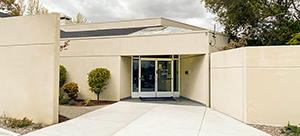How To Pay for Assisted Living
Choosing assisted living is a meaningful step toward ensuring safety, comfort, and social connection for older adults, but it’s natural for families to wonder how to pay for assisted living services.
Assisted living expenses vary based on location, level of care, and the type of community, so it helps to understand the financial planning options available before making a decision. From government programs to long-term care insurance, there are several ways to make assisted living more affordable and accessible.

A Quick Note About Planning Ahead for Assisted Living Costs
Preparing early for assisted living expenses can ease both financial and emotional stress. Working with a financial planner or elder law attorney helps families understand available resources (like long-term care insurance, veterans’ benefits, or trusts) and plan how assets such as home proceeds or retirement funds can support future care. However, if you or a loved one have not yet planned ahead for these things, there are still options available to help.
Options That Help With Paying for Assisted Living
Paying for assisted living often involves combining several financial resources to cover both care and housing costs. While some programs can offset expenses, most families rely on a mix of private funds, insurance, or veteran benefits. Understanding the differences between these options (and which ones apply to your situation) can make planning much easier.
Can I Use Medicaid for Assisted Living at ECA?
While Medicaid is one of the most common ways older adults pay for long-term care, it is important to note upfront that Elder Care Alliance communities no longer accept Medicaid.
Many states offer Medicaid Waivers, also known as Home and Community-Based Services (HCBS) Waivers or 1915(c) Waivers, which can help cover personal care and support services in assisted living. You should check with your assisted living community beforehand to make sure they accept Medicaid if you plan to use it to help pay for services.
Start here for California’s Medicaid Assisted Living Waiver program.

Are There Veterans’ Benefits for Elderly Care?
Several programs in the United States help veterans cover or reduce the costs of assisted living and long-term care. The Department of Veterans Affairs (VA) offers a range of options, including long-term care services and community residential care for those enrolled in VA health care. While the VA may cover certain medical or personal care services, it typically does not pay for room and board in assisted living facilities.
One of the most well-known benefits is the Aid and Attendance (A&A) and Housebound pension supplement. These programs add extra financial assistance to veterans’ standard VA pensions if they require help with daily activities like bathing, dressing, or managing medications. To qualify, veterans must meet specific service, medical, and income requirements, such as:
- You must first qualify for the basic VA pension
- You must meet medical criteria like needing help with daily living activities (ADLs) such as bathing, dressing, using the toilet, etc.
- You must meet income and net worth limits
- Wartime service is usually required (one day of service during a wartime period)
Surviving spouses of eligible veterans may also receive this benefit, which can help offset assisted living costs even though it may not cover everything. The monthly benefits amount differs depending on each person’s situation but typically averages around $2,000 per month.
Does Long Term Care Insurance Cover Assisted Living?
Assisted living is primarily paid for by individuals’ private or personal funds, such as long-term care insurance or personal assets. Medicare does not cover long-term supports and services, and while Medicaid may help with some costs, eligibility rules vary widely by state. That’s where long-term care insurance (LTC insurance) can make a meaningful difference. These policies are designed to help cover the cost of ongoing care that isn’t typically included in standard health insurance, such as assistance with daily activities, personal care, or supervision in an assisted living community.
Most LTC insurance plans reimburse a set daily or monthly amount for care expenses, which can include services provided in assisted living, memory care, or even in-home care. Policies often have a waiting or “elimination” period before benefits begin, and coverage limits depend on the specific plan purchased. Many policies also include inflation protection, ensuring benefits increase over time to keep up with rising care costs.
Because premiums depend on factors like age, health, and coverage level, it’s generally best to explore long-term care insurance before retirement. For those who already have a policy, reviewing it before moving into assisted living can help clarify what’s covered and how to file claims efficiently. In most cases, having LTC insurance provides greater financial flexibility and can help families manage care costs while preserving savings and peace of mind.

What About Assisted Living Bridge Loans?
A senior bridge loan or assisted living bridge loan is a short-term financing solution that helps older adults and their families cover the cost of care while waiting for permanent funding to come through. These loans can be especially helpful during transitions such as selling a home, finalizing benefits from veterans’ programs, or accessing long-term care insurance.
Bridge loans typically last between 6 and 12 months and are designed for flexibility. They can often be approved quickly, and multiple family members can co-sign to share responsibility. In many cases, only interest payments are required during the loan term, easing the financial strain while other resources are finalized.
Organizations like Elderlife Financial Services and Second Act Financial Services offer bridge loan programs specifically for senior living. Funds are usually sent directly to the assisted living community, allowing your loved one to move in right away without delay.
For many families, a senior bridge loan provides valuable breathing room, making it possible to secure quality care now while waiting for longer-term financial arrangements to fall into place.
What About Assisted Living Bridge Loans?
A senior bridge loan or assisted living bridge loan is a short-term financing solution that helps older adults and their families cover the cost of care while waiting for permanent funding to come through. These loans can be especially helpful during transitions such as selling a home, finalizing benefits from veterans’ programs, or accessing long-term care insurance.
Bridge loans typically last between 6 and 12 months and are designed for flexibility. They can often be approved quickly, and multiple family members can co-sign to share responsibility. In many cases, only interest payments are required during the loan term, easing the financial strain while other resources are finalized.
Organizations like Elderlife Financial Services and Second Act Financial Services offer bridge loan programs specifically for senior living. Funds are usually sent directly to the assisted living community, allowing your loved one to move in right away without delay.
For many families, a senior bridge loan provides valuable breathing room, making it possible to secure quality care now while waiting for longer-term financial arrangements to fall into place.
Get Guidance on How To Pay for Assisted Living With ECA
Paying for assisted living may seem complex, but with the right information and planning, families can find an option that fits both their care needs and budget. Elder Care Alliance communities are happy to guide families through these choices and provide clarity on available resources so your loved one can focus on enjoying a supportive, enriching community environment. Contact us to learn more.
Where to Begin
This is a new transition and there are many things to consider. Start here to find out your options and what others have experienced before you.















